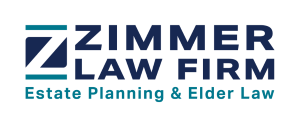By Barry Zimmer on February 19th, 2019 in Elder Law
 Most people are aware of the fact that Medicaid is a jointly administered federal/state government program that is a source of health insurance for financially needy individuals. This can trigger a very logical question when you hear the term “Medicaid planning.” Why would anyone implement a plan that would make them poor enough to qualify for Medicaid?
Most people are aware of the fact that Medicaid is a jointly administered federal/state government program that is a source of health insurance for financially needy individuals. This can trigger a very logical question when you hear the term “Medicaid planning.” Why would anyone implement a plan that would make them poor enough to qualify for Medicaid?
Long-Term Care
The United States Department of Health and Human Services tells us that seven out of every 10 senior citizens will eventually need help with their activities of daily living. Many of these folks will eventually require a level of care that only a nursing home can provide.
These facilities are very expensive. Our office is in Cincinnati, and in our area, you can expect to pay somewhere in the vicinity of $100,000 for a year in a nursing home. If you are married, your family may be faced with two different rounds of these stifling expenses.
At this point, if you have not looked into the subject, you may be thinking that you are not worried, because you will qualify for Medicare when you attain senior citizen status. Since this program is designed to satisfy the health care needs of seniors, this is a logical assumption.
It may not make sense to many people, but in fact, the Medicare program will not pay for a stay in a nursing home. Medicare will pay for convalescent care after a medical procedure when recovery is expected, but it will not pay for the custodial care that you would receive in a nursing home.
Medicaid Eligibility
Now we can tie this all together. Medicaid does pay for long-term care, and this is what Medicaid planning is all about. Since it is intended for people with limited resources, there is an asset limit of just $2000. However, there are some assets that are not counted.
If you are a homeowner, the property is not considered to be a countable asset, but there is an equity limit. In 2019, that limit stand at $585,000 in the state of Ohio. There is no equity limit at all if a healthy spouse is remaining in the home while his or her spouse enters a long-term care facility.
Personal belongings, household effects, wedding rings, engagement rings, and heirloom jewelry are not considered to be countable assets. Ownership of one vehicle is allowed, and an applicant can have unlimited term life insurance and up to $1500 worth of whole life insurance.
In addition to the fact that there is no home equity limit when there is a healthy spouse involved, there are other provisions. The healthy spouse is entitled to a Community Spouse Resource Allowance, which equates to half of the shared countable assets. There is a limit, and for the current calendar year, it is $126,420.
There is also a minimum amount that a healthy spouse can keep, even if it is more than half of the shared assets that are countable. At the present time, this limit is $25,284.
Another protection for the spouse that is still capable of independent living is the Monthly Maintenance Needs Allowance. A person that is using Medicaid to pay for long-term care must contribute almost all of his or her income toward the cost of the care that is being received. However, this requirement is waived when a healthy spouse is depending on the income. The maximum Monthly Maintenance Needs Allowance in Ohio in 2019 is $3160.50, and the minimum is $2057.50 a month.
When it comes the assets that are countable, you could give gifts to your loved ones before you apply for Medicaid. However, all gift giving must be completed at least five years before you submit your application for Medicaid coverage. If you were to violate this rule, your eligibility would be delayed, and you would have to pay out of pocket during a penalty period that could be multiple years. This is why careful, informed advance planning is essential.
Attend a Free Seminar!
If you would like to learn more about important estate planning and elder law topics, attend one of our upcoming seminars. They are being offered on a complimentary bases, and you can visit this page to see the dates and obtain registration information.

